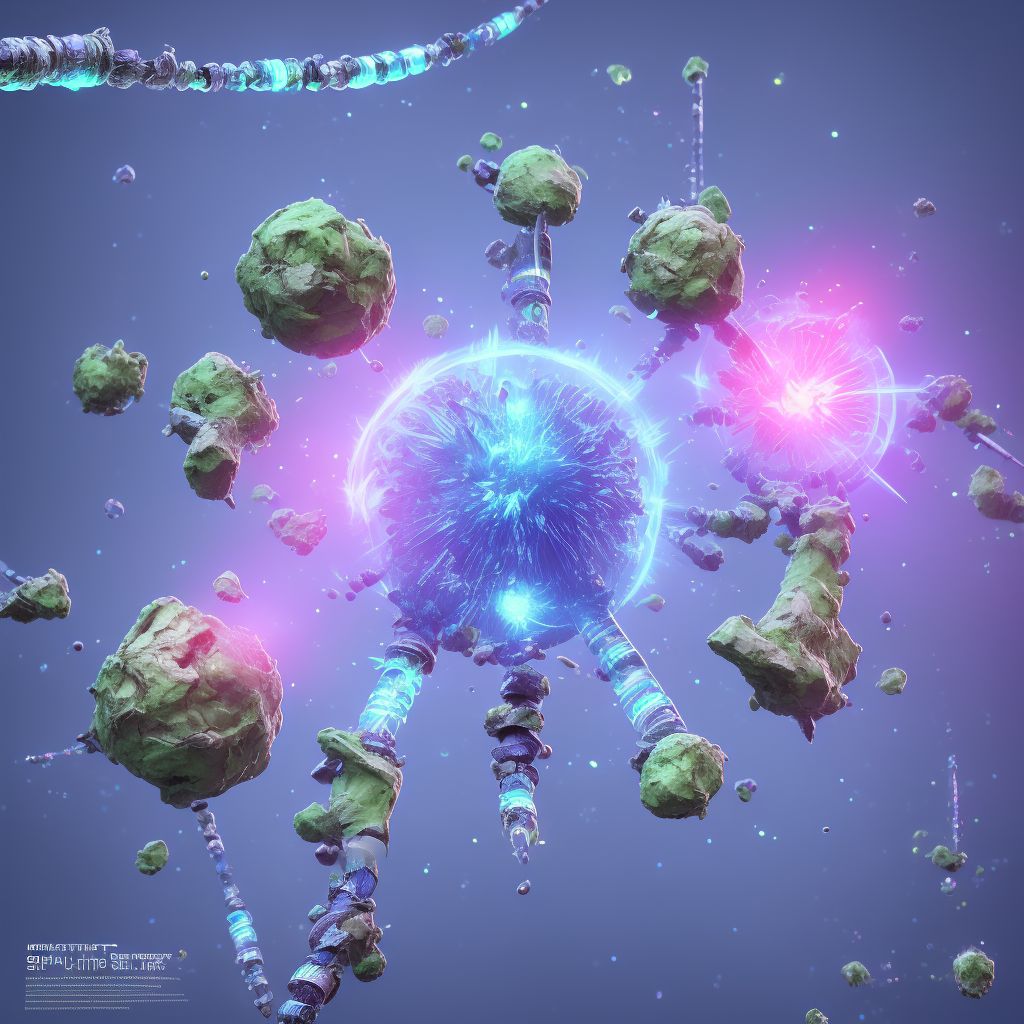
Displaced spiral fracture of shaft of right fibula, sequela Save
ICD-10 code: S82.441S
Disease category: S82.441: Displaced spiral fracture of shaft of right fibula
Displaced Spiral Fracture of Shaft of Right Fibula, Sequela: Causes, Symptoms, and Management
A displaced spiral fracture of the shaft of the right fibula is a severe injury that can have long-term consequences. When a fracture is described as "displaced," it means that the bone fragments have moved out of their normal alignment. This type of fracture occurs when rotational force is applied to the bone, causing it to twist and break. The sequela refers to the after-effects or complications that may arise as a result of the initial injury.
Causes:
Displaced spiral fractures of the shaft of the right fibula are commonly seen in high-impact accidents such as sports injuries, falls from heights, or motor vehicle accidents. The twisting and rotational forces involved in these accidents can cause the fibula bone to break and become displaced.
Symptoms:
The most common symptoms of a displaced spiral fracture of the shaft of the right fibula include severe pain, swelling, bruising, and difficulty in bearing weight on the affected leg. Additionally, there may be visible deformity or angulation of the leg, indicating the displacement of the bone fragments.
Management:
- Diagnosis: To diagnose a displaced spiral fracture of the shaft of the right fibula, a comprehensive physical examination and imaging tests such as X-rays, CT scans, or MRI may be performed. These tests help in determining the extent of the fracture and the degree of displacement.
- Immobilization: After diagnosis, immediate immobilization of the affected leg is crucial to prevent further damage and promote healing. This is typically achieved using a cast or a brace, which helps stabilize the bone fragments and allows them to fuse back together.
- Rehabilitation: Once the initial healing has occurred, a rehabilitation program may be recommended to regain strength, flexibility, and mobility in the affected leg. This may involve exercises, physical therapy, and gradual weight-bearing activities.
- Follow-up: Regular follow-up appointments with a healthcare professional are essential to monitor the progress of healing and ensure there are no complications or setbacks. X-rays may be repeated to assess the alignment and stability of the bone as healing progresses.
It is important to note that this article does not cover treatment options for a displaced spiral fracture of the shaft of the right fibula. Treatment strategies vary depending on the severity of the fracture, the patient's overall health, and other individual factors. Therefore, it is crucial to consult a healthcare professional for personalized advice and appropriate treatment options.
In conclusion, a displaced spiral fracture of the shaft of the right fibula is a serious injury that requires prompt
Treatment of Displaced spiral fracture of shaft of right fibula, sequela:
Treatment Options for Displaced Spiral Fracture of Shaft of Right Fibula, Sequela
A displaced spiral fracture of the shaft of the right fibula can be a debilitating injury that requires prompt and appropriate treatment. This type of fracture occurs when the bone breaks in a spiral pattern, often caused by excessive twisting or rotational forces.
When it comes to treating th...
To see full information about treatment please Sign up or Log in